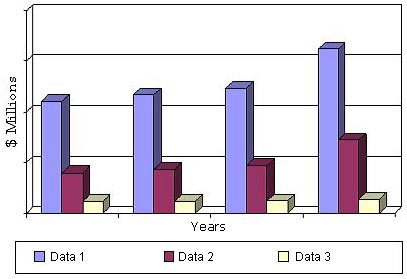Drugs and Diagnostics for Hematological Diseases
March 03, 2013
Wellesley, Mass. – A change is expected in the global drug market in the coming years. Developed markets will decline due to patent expiries, slower brand spending growth, and increased cost-containment actions. Emerging markets’ share of spending will increase as population and economic growth increase use of medicines in these regions. An accelerated shift in spending to generics is also expected; biologic medicines, including biosimilars, are expected to account for more than $200 billion of global spending.
The category of blood disease is very broad and several types of the disease fall in this category. The diseases that affect the red blood cells include anemia, sickle-cell anemia, and polycythemia vera. Lymphoma and leukemia are the main types of diseases affecting white blood cells. Thrombocytopenia, heparin, and essential thrombocytosis are diseases that affect the platelets found in the blood. Sepsis and hemophilia target the plasma body of the blood. There are three main types of blood cancers: leukemia is a type of cancer found in the blood and bone marrow that is caused by the rapid production of abnormal white blood cells, lymphoma is a type of blood cancer that affects the lymphatic system, and myeloma is a type of blood cancer that specifically targets the plasma cells.
The total global market for hematological disorder drugs and diagnostics in 2012 was estimated at nearly $72.9 billion. By 2017, the market is expected to reach $99.1 billion, growing at a compound annual growth rate (CAGR) of 6.4% between 2012 and 2017. The global blood disorders market segment is estimated at $49.3 billion in 2012 and is expected to reach nearly $64.7 billion by 2017. The major reason for the low growth rate is the expected decline in the annual cost of treating blood disorders and the patent expirations of Lovenox, Plavix, Procrit/Epogen, Aranesp, and Neulasta. In 2010, all these drugs together brought revenue of about $32 billion into the global blood disorders market.)
Hematological cancers arise from and are found in the blood, bone marrow, and lymphatic systems, and represent a significant medical problem globally. Many specific therapies for hematological cancers have been developed, such as targeted small-molecule drugs and biological therapies, including monoclonal antibodies.
The global market for hematological cancer drugs was estimated to be $18.7 billion in 2012. By 2017, the market is expected to reach $28.8 billion, growing at a CAGR of 9% between 2012 and 2017.
Leukemia is the ninth most common type of cancer in males. The leukemia market is segmented into four types: acute lymphocytic leukemia, chronic lymphocytic leukemia, acute myeloid leukemia, and chronic myeloid leukemia. The market was dominated by chronic myeloid leukemia (CML) in 2012. The growing population of individuals suffering from leukemia is an impetus for the growth of the market. This market is expected to grow at a CAGR of 11.3% from 2012 to 2017. The historic growth in major markets was driven mainly by the increasing prevalence of the disease as well as the launch of newer brands of medication, such as Sprycel, Tasigna, Clolar, and Arranon, with no major patent expirations. The United States was the leading market. Leukemia is still an area with high unmet need for early diagnosis and limited treatment options in this area.
The BCC Research report, Drugs and Diagnostics for Hematological Disorders: Global Markets (PHM116A), was conducted to provide detailed information regarding screening, testing, and treatment options for hematological disorders and blood cancer. There is an increasing need for new and innovative technologies. This industry is experiencing tremendous growth. Many diseases discussed in this report are global issues, and a need exists for newer diagnostic and treatment strategies. Some of these ailments affect children and the elderly. This study looks at most types of diagnostic and treatment strategies for the clinical management of hematological disorders and blood cancers.
This BCC Research market research report will increase the awareness of current and emerging drugs and technologies for hematological disorders and blood cancers, including hematological disorder therapeutics, chemotherapy, radiation therapy, surgical therapy, immunotherapy, and nutrition therapy.

Drugs and Diagnostics for Hematological Disorders: Global Markets( PHM116A )
Publish Date: Mar 2013
Data and analysis extracted from this press release must be accompanied by a statement identifying BCC Research LLC as the source and publisher. For media inquiries, email press@bccresearch.com or visit www.bccresearch.com/media to request access to our library of market research.
BCC Library Membership Benefits
Unlimited Access to Market Research Reports for Academic Institutions and Corporations.
Custom Research
Tailored solutions across industries for your unique business needs.
More in Pharmaceuticals
- Viral Vector Market to Grow 24.6% Annually Through 2030
- Brain Tumor Therapeutics Market to Grow at 11.1% CAGR Through 2030
- Global Hyaluronic Acid in Healthcare Market to Reach $10.5 Billion by 2030
- Targeted Alpha Therapies Market to Grow at 44% CAGR Globally by 2030
- Global Anti-Parkinson's Drugs Markets Projected to Reach $9.2 Billion by the End of 2030
Reports from Pharmaceuticals
Recent News
- Global MedTech and Healthcare IT Industry: Accelerating Digital Transformation in Patient Care
- Healthcare Predictive Analytics Market to Grow at 24.7% CAGR Through 2030
- mHealth Technologies Market Poised for 17.1% CAGR Growth Through 2030
- Fusion Proteins Market to Hit $64.9 Billion by 2030
- Global Separation Systems Market for Commercial Biotechnology Projected to Reach $45.1 Billion by 2030
